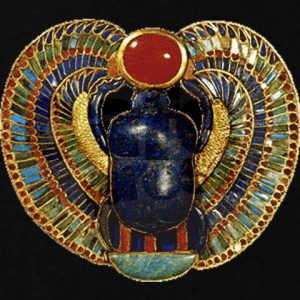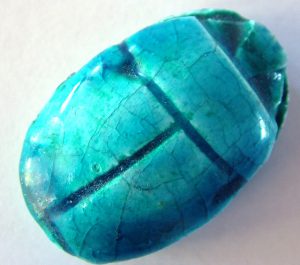Egypt was never a country having a large population of wild herbivores grazing or a large number of other animals. Therefore though the numbers of Egypt Dung Beetle were much lower, yet this humble insect caught the eye of the Egyptians.

The dung beetle (also known as scarab) was famous for his habit of rolling balls of dung along the ground and depositing them in its burrows. The female would lay her eggs in the ball of dung. When they hatched, the larvae would use the ball for food. When the dung was consumed the young beetles would emerge from the hole.
Scarabs are associated with the Egyptian god, Khepri.
The scarab beetle was also a symbol of rebirth after death. The Heart Scarab, which had hieroglyphic inscriptions on the back, was often buried with the dead to ensure the rebirth of the deceased in the afterlife. When the Egyptians mummified a body they would remove the heart and put a stone carved like the beetle in its place.
The ray-like antenna on the beetle’s head and its practice of dung-rolling caused the beetle to also carry solar symbolism.
Use of Egypt Dung Beetle
A depiction of a scarab beetle was used in the making of jewelry in the form of pendants, bracelets, rings, and necklaces and was believed to hold strong magical and religious properties. The name of the owner was inscribed on their flat bases to ensure that protective powers would be given to the wearer. Dung beetles come in a variety of colors, from dull and glossy black to metallic green and red.

The undersides of scarabs were inscribed with hieroglyphs, names, symbols, mottoes, and more. The accompanying picture shows an inscribed soapstone (steatite) scarab. Scarabs were made of various minerals.
Scarab pendants, bracelets, rings and necklaces were often made of precious or semi-precious jewels such as carnelian, lapis lazuli, and turquoise.